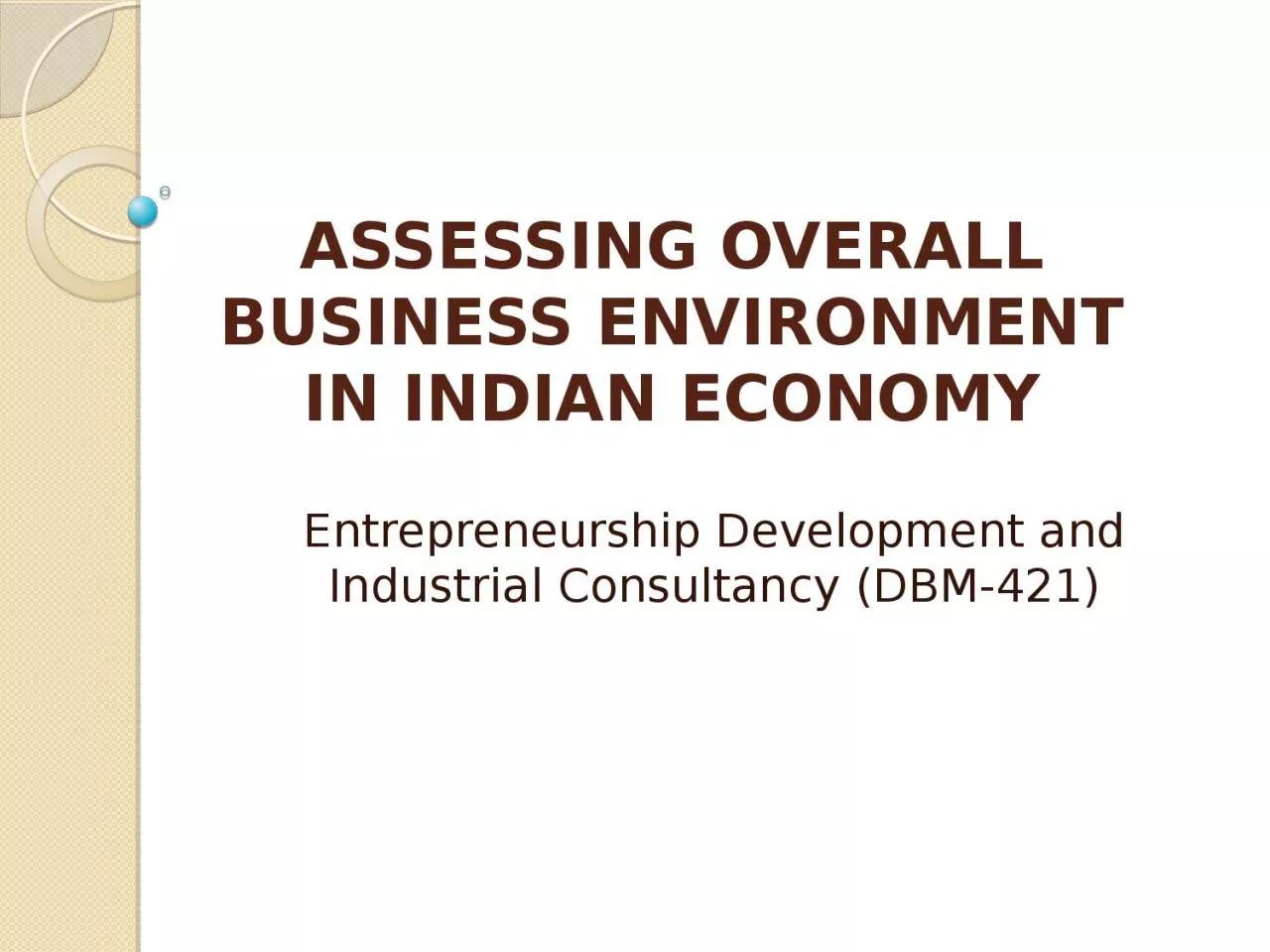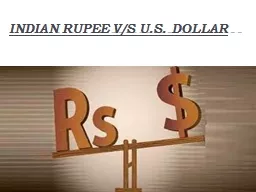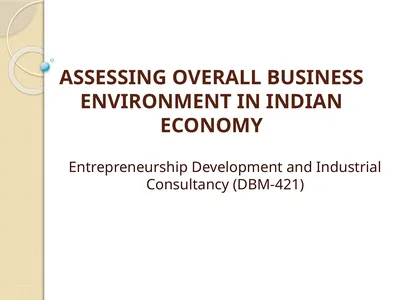PPT-ASSESSING OVERALL BUSINESS ENVIRONMENT IN INDIAN ECONOMY
Author : LittleMissPerfect | Published Date : 2022-08-02
Entrepreneurship Development and Industrial Consultancy DBM421 What is business It is referred to as an organized effort of enterprise to supply consumer with goods
Presentation Embed Code
Download Presentation
Download Presentation The PPT/PDF document "ASSESSING OVERALL BUSINESS ENVIRONMENT I..." is the property of its rightful owner. Permission is granted to download and print the materials on this website for personal, non-commercial use only, and to display it on your personal computer provided you do not modify the materials and that you retain all copyright notices contained in the materials. By downloading content from our website, you accept the terms of this agreement.
ASSESSING OVERALL BUSINESS ENVIRONMENT IN INDIAN ECONOMY: Transcript
Download Rules Of Document
"ASSESSING OVERALL BUSINESS ENVIRONMENT IN INDIAN ECONOMY"The content belongs to its owner. You may download and print it for personal use, without modification, and keep all copyright notices. By downloading, you agree to these terms.
Related Documents














